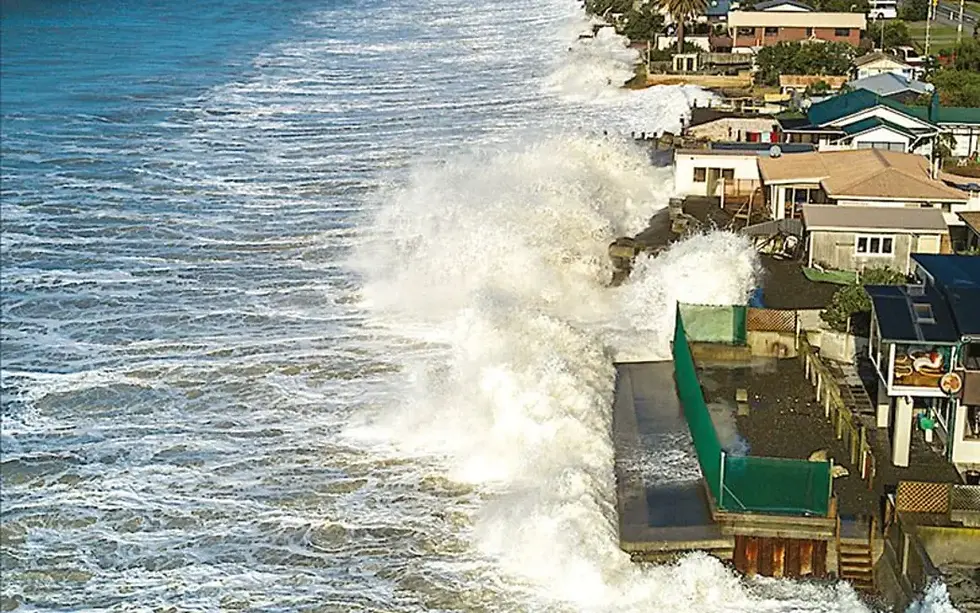Construction : modularity and biomimetism
- charlotteselve8
- 2 sept. 2023
- 4 min de lecture
In our rapidly changing world, the future of urban living is taking a turn towards the seas.
Floating cities are emerging as remarkable solutions to address overcrowding, climate change, and environmental sustainability.
Dive with us into the visionary world of floating cities and the groundbreaking construction techniques that bring them to life.
Construction Technics, technologies and Innovations
1. Modularity: The Key to Versatile Construction
Modularity lies at the heart of creating adaptable, scalable floating cities. These innovative urban environments are constructed using modular components that can be assembled and disassembled with ease. This concept allows for swift expansion, relocation, and customization, making it an ideal choice for the ever-evolving world.
2. Biomimetic Architecture: Learning from Nature
Biomimetic architecture draws inspiration from nature's genius. By mimicking natural systems, architects and engineers create structures that are not just aesthetically pleasing but also highly functional. Biomimetic designs often optimize energy efficiency and minimize environmental impact, embodying a sustainable approach to construction.
3. Eco-Friendly Construction Materials:
Floating cities champion eco-friendly construction materials, aiming to reduce their carbon footprint. Several innovations are making waves:
Bio Rock: This sustainable material mimics natural coral formation and strengthens over time, offering durable and environmentally friendly foundations.
Cool Roof: Cool roofs reflect more sunlight and absorb less heat, reducing indoor cooling needs and energy consumption.
Freecooling: A ventilation system that utilizes outside air to cool buildings, minimizing the use of energy-intensive air conditioning.
Bio Urban Tree: Bio urban trees are biofiltration systems that clean the air and provide a green touch to urban environments.
Glowee: Bioluminescent organisms like those found in Glowee's projects could potentially replace traditional lighting sources, significantly reducing energy consumption.
Direct Air Capture (DAC) Technology: DAC technology extracts CO2 from the atmosphere, offering a path towards carbon neutrality in construction.
4. Zero Waste Solutions: Minimizing Environmental Impact
Zero waste solutions are essential in the construction of floating cities. Projects aim to reduce waste generation by using sustainable materials, recycling, and reusing components whenever possible. This approach aligns with the principles of the circular economy, minimizing environmental harm.
Project : Venture FloatHouses
Pioneering a new era in floating architecture, these modular, biomimetic structures aim to redefine waterfront living. With ongoing developments, they showcase the potential of modularity and biomimetic design.
A Visionary Architect:
The mastermind behind the Venture FloatHouses project is renowned Dutch architect Koen Olthuis. Known for his pioneering work in amphibious architecture, Olthuis has made it his mission to address the challenges posed by rising sea levels and urbanization. His architectural firm, Waterstudio.NL, specializes in designing buildings that can both float on water and withstand flooding—a visionary approach to the built environment.
Owners and Developers:
The Venture FloatHouses project is developed by a consortium of visionary investors and developers. Led by Olthuis and his team at Waterstudio.NL, this collaboration aims to create a harmonious blend of sustainability, functionality, and aesthetics in floating urban environments.
A Timeline of Innovation:
Project Commencement: The Venture FloatHouses project started taking shape in the early 2010s when Koen Olthuis and his team envisioned a new era of sustainable waterfront living.
Ongoing Developments: As of [current year], the project continues to evolve and expand. Ongoing developments include the design and construction of additional FloatHouses, further refining the concept.
The Essence of Modularity:
At the heart of the Venture FloatHouses project lies the concept of modularity. These floating structures are designed as individual, self-contained units that can be easily assembled, disassembled, or rearranged as needed. This flexibility allows for customization, expansion, and adaptation to various locations and needs.
Biomimetic Brilliance:
Venture FloatHouses embrace biomimetic architecture, taking inspiration from nature's solutions to environmental challenges. The biomimetic design principles include:
Adaptive Façades: Exterior surfaces can adjust to environmental conditions, optimizing energy use and comfort for residents.
Solar Energy Integration: The project incorporates solar panels for renewable energy generation, reducing its carbon footprint.
Buoyancy and Stability: Drawing from natural buoyancy principles, the FloatHouses remain stable even in changing water levels.
Wave Attenuation: The design minimizes the impact of waves and wakes, providing a serene living environment.
Sustainable Materials: Eco-friendly materials are used in construction to reduce environmental impact.
Status and Future Prospects:
As of 2023, the Venture FloatHouses project continues to make strides in its development. Some FloatHouses have already been constructed and occupied, while others are in various stages of design and construction. This ongoing progress demonstrates the commitment to refining and expanding this innovative concept.
The Venture FloatHouses project, led by visionary architect Koen Olthuis and his team at Waterstudio.NL, marks a significant leap forward in sustainable urban living.
Through modularity, biomimetic design, and a commitment to adaptability, these floating structures offer a glimpse into a future where waterfront living seamlessly harmonizes with the environment.
As the project continues to evolve and inspire, it not only redefines the concept of waterfront living but also offers a blueprint for resilient, sustainable, and customizable urban environments.
The Venture FloatHouses project reminds us that the future of architecture is not fixed but floating—with endless possibilities waiting to be explored.
Sustainable Dreams Afloat
The era of floating cities is upon us, and they come with a promise of sustainability, adaptability, and harmony with nature. Modularity, biomimetic architecture, eco-friendly materials, and zero waste solutions are the guiding lights in the construction of these aquatic utopias.
As we navigate the challenges of urbanization, climate change, and resource scarcity, floating cities offer a beacon of hope—a future where sustainable living meets the boundless expanse of our oceans.
Through innovation, creativity, and a deep respect for our environment, we can build a future where cities not only coexist with nature but actively thrive in its embrace.


Commentaires